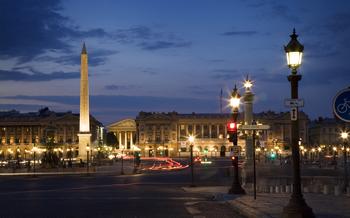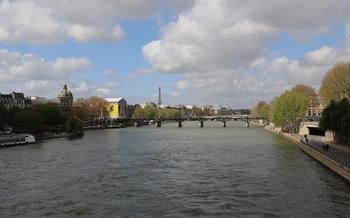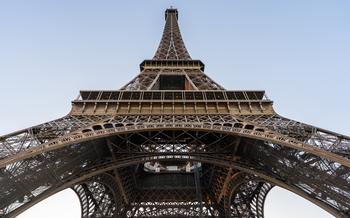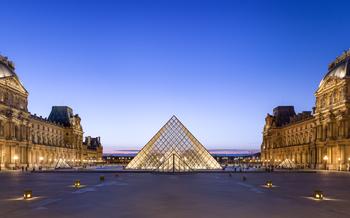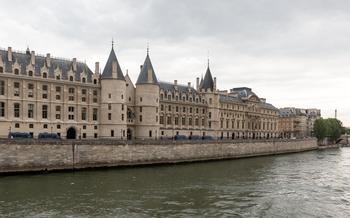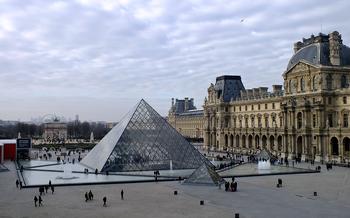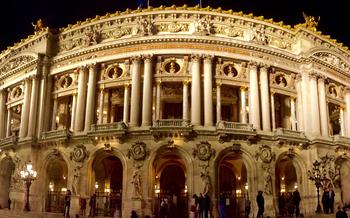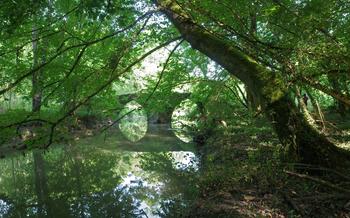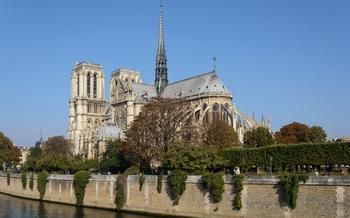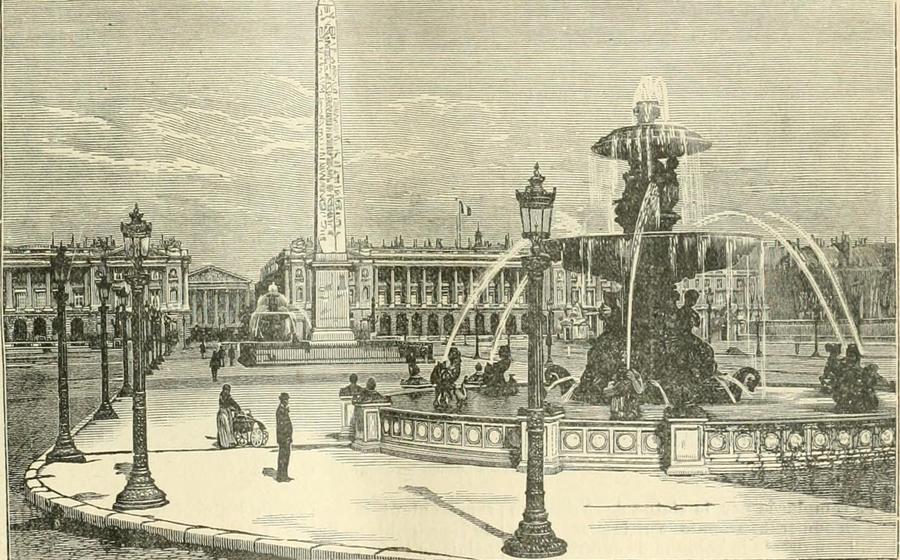
Place de la Concorde
- Place de la Concorde: An Ode to French History
- Unveiling the History of Place de la Concorde
- Exploring the Architectural Masterpieces
- Marveling at the Egyptian Obelisk
- The Luxor Obelisk: A Symbol of Ancient Egypt
- Walking Through History: The Surrounding Palaces
- Tips for Visiting Place de la Concorde
- Witnessing the Bastille Day Celebrations
- Unveiling the Secrets of the Luxor Obelisk
- Admiring the Architectural Details of the Surrounding Palaces
- Tips for Capturing the Perfect Photo
- Insider Tip: A Hidden Gem Nearby
Place de la Concorde: An Ode to French History
A majestic square steeped in French history, Place de la Concorde stands as a testament to the nation's tumultuous past and unwavering spirit. Its grand architecture, cultural significance, and historical allure make it a must-see Parisian landmark. Whether you're a history buff, an architecture enthusiast, or simply a curious traveler, the Place de la Concorde promises an enriching and unforgettable experience.
Its historical significance is undeniable, having witnessed pivotal moments that shaped the course of France. Once a royal square, it played host to lavish celebrations and military parades. However, it was during the French Revolution that the square became etched in history, serving as the stage for bloody guillotine executions, including those of King Louis XVI and Marie Antoinette.
The architectural grandeur of the square is equally impressive. Its harmonious layout, adorned with stunning fountains and the majestic Luxor Obelisk, creates a captivating visual symphony. The surrounding palaces, each with its own unique architectural style, further enhance the square's grandeur.
Culturally, the Place de la Concorde is a vibrant tapestry of Parisian life. It hosts numerous events throughout the year, from Bastille Day celebrations to art exhibitions and concerts. Its central location and proximity to iconic landmarks make it a popular meeting point for Parisians and tourists alike.
In essence, the Place de la Concorde is more than just a square. It is a living testament to French history, a symbol of the nation's resilience and cultural heritage, and an enduring Parisian landmark that continues to captivate visitors from around the world.
Unveiling the History of Place de la Concorde
The Place de la Concorde has witnessed pivotal moments in French history, leaving an indelible mark on its identity. Initially conceived as a royal square in the 18th century, it was designed as a symbol of the French monarchy's power and prestige. However, the square's fate took a dramatic turn during the French Revolution, transforming it into a stage for bloody executions. The guillotine claimed the lives of King Louis XVI and Marie Antoinette, among others, leaving a somber legacy that forever intertwined the square with the tumultuous events of that era.
In the 19th century, the square underwent a significant transformation, shedding its revolutionary past to become a place of commemoration and celebration. The installation of the Egyptian obelisk in the center of the square in 1836 marked a new chapter in its history, symbolizing reconciliation and a renewed appreciation for France's cultural heritage. Today, the Place de la Concorde stands as a testament to the resilience and evolution of the French nation, embodying both its revolutionary spirit and its rich cultural tapestry.
Exploring the Architectural Masterpieces
At the heart of Place de la Concorde stands the majestic Luxor Obelisk, a towering testament to ancient Egyptian civilization. This 3,300-year-old monolith, a gift from Muhammad Ali, the ruler of Egypt, to King Louis-Philippe I, has become the centerpiece of the square. Its hieroglyphic inscriptions, intricately carved into the granite surface, narrate tales of ancient pharaohs and their divine power.
Surrounding the obelisk are two magnificent fountains, the Fontaine des Mers and the Fontaine des Fleuves, which symbolize the meeting of the world's oceans and rivers. Their cascading waters create a soothing ambiance, adding to the square's grandeur.
The surrounding palaces, with their elegant facades and intricate architectural details, further enhance the square's charm. Hôtel de Crillon, a renowned luxury hotel, boasts a rich history and has hosted countless celebrities and dignitaries. Palais Bourbon, the seat of the French National Assembly, is a masterpiece of neoclassical architecture. Palais de la Marine, once the French Navy's headquarters, now houses the Ministry of the Armed Forces. The Ministère de la Marine, with its imposing presence, completes the architectural ensemble of Place de la Concorde.
Marveling at the Egyptian Obelisk
The Place de la Concorde is home to one of the most captivating ancient Egyptian artifacts in the world - a towering obelisk that stands as a testament to the enduring legacy of a civilization that thrived millennia ago. Known as the Luxor Obelisk, this monolith was originally erected in the Temple of Luxor in ancient Thebes, now known as Luxor, Egypt. Carved from red granite, the obelisk stands at an impressive 23 meters tall and weighs approximately 250 tons. Its surface is adorned with intricate hieroglyphic inscriptions that tell the tales of Pharaoh Ramses II, his military victories, and his devotion to the gods.
The obelisk's journey to Paris was a remarkable feat of engineering and diplomacy. In the 19th century, Muhammad Ali, the ruler of Egypt, gifted the obelisk to the French in recognition of their support during the Napoleonic Wars. The obelisk was transported to France in 1833, where it was initially placed in the center of the Place de la Concorde. However, in 1836, it was moved to its current location, where it has remained ever since, becoming an iconic symbol of the square and a beloved landmark of Paris.
The Luxor Obelisk is not just a historical artifact; it is a symbol of cultural exchange and the enduring fascination with ancient Egypt. Its presence in the heart of Paris serves as a reminder of the deep connections between civilizations across time and space.
The Luxor Obelisk: A Symbol of Ancient Egypt
Amidst the grandeur of Place de la Concorde stands the Luxor Obelisk, a majestic monolith that has witnessed the passage of time and the rise and fall of civilizations. Originally erected in Luxor Temple, Egypt, approximately 3,300 years ago, this impressive obelisk was a symbol of power and prestige in ancient Egypt. Standing at a remarkable 23 meters tall, it is a testament to the engineering prowess of the ancient Egyptians.
The Luxor Obelisk, along with its twin obelisk that remains in Luxor Temple, was commissioned by Pharaoh Ramses II to commemorate his military victories and achievements. The obelisks were carved from a single block of pink granite and adorned with intricate hieroglyphic inscriptions that recount the pharaoh's triumphs and pay homage to the gods.
In the 19th century, the Luxor Obelisk was gifted to France by Muhammad Ali, the ruler of Egypt, as a symbol of friendship and cooperation between the two nations. After a challenging journey across the Mediterranean Sea, the obelisk was finally erected in the center of Place de la Concorde in 1836, where it has stood ever since, becoming a beloved landmark and a reminder of the rich cultural heritage that binds France and Egypt.
Walking Through History: The Surrounding Palaces
Place de la Concorde is surrounded by several remarkable palaces, each holding a significant place in French history and architecture.
-
Hôtel de Crillon: This opulent hotel was once the residence of the Duke of Crillon, a renowned military commander. Today, it stands as one of the most prestigious hotels in Paris, exuding elegance and grandeur.
-
Palais Bourbon: Initially constructed as a private mansion, the Palais Bourbon has served as the seat of the French National Assembly since 179Its imposing façade and ornate interiors reflect its historical importance.
-
Palais de la Marine: This elegant palace was built in the 18th century and initially served as the residence of the Minister of the Navy. Today, it houses the French Ministry of the Armed Forces and is a testament to the country's maritime heritage.
-
Ministère de la Marine: Located opposite the Palais de la Marine, this building was constructed in the 18th century and served as the headquarters of the French Navy. It now houses various government offices and is a significant example of French Neoclassical architecture.
Tips for Visiting Place de la Concorde
To fully appreciate the grandeur of Place de la Concorde, plan your visit during the early morning or late evening to avoid the crowds and capture the best light for photography. Take advantage of the guided tours offered by local history experts to delve deeper into the fascinating stories and anecdotes surrounding the square.
When it comes to transportation, the Paris Metro is the most convenient option, with several lines stopping near the square. Alternatively, you can opt for a leisurely stroll along the Seine River, enjoying the picturesque views as you approach Place de la Concorde.
While in the area, don't miss the opportunity to explore the surrounding attractions, such as the Tuileries Garden, the Louvre Museum, and the Grand Palais. These iconic landmarks offer a rich tapestry of art, history, and culture, making your visit to Place de la Concorde even more rewarding.
Witnessing the Bastille Day Celebrations
Every 14th of July, Place de la Concorde transforms into a vibrant stage for the Bastille Day celebrations, a national holiday commemorating the storming of the Bastille prison in 1789, a pivotal event in the French Revolution. The day unfolds with a grand military parade, showcasing the strength and precision of the French Armed Forces. Marching bands fill the air with stirring melodies as regiments of soldiers, tanks, and aircrafts make their way down the Champs-Élysées, culminating in a breathtaking display of military prowess at Place de la Concorde.
As dusk settles, the sky above the Place de la Concorde bursts into a kaleidoscope of colors, as a spectacular fireworks display illuminates the Parisian skyline. The Eiffel Tower serves as a majestic backdrop to this pyrotechnic extravaganza, creating a truly magical and unforgettable experience. The atmosphere is electric, filled with patriotic fervor and a sense of national unity. Place de la Concorde becomes a melting pot of locals and visitors, all gathered to celebrate the spirit of liberté, égalité, fraternité (liberty, equality, fraternity) that defines the French Republic.
Unveiling the Secrets of the Luxor Obelisk
The Luxor Obelisk, with its towering presence, holds a treasure trove of secrets and captivating stories waiting to be unveiled. Its surface is adorned with intricate hieroglyphics, each symbol narrating tales of ancient Egyptian history and mythology. These hieroglyphs depict scenes of offerings to the gods, victories in battle, and the divine lineage of the pharaohs.
The obelisk's journey to Paris is no less fascinating. In the 19th century, Muhammad Ali, the ruler of Egypt, gifted the obelisk to France as a gesture of friendship. The transportation of this colossal monument across the Mediterranean Sea was an engineering feat of its time, requiring the construction of a specialized ship.
Upon its arrival in Paris, the Luxor Obelisk was initially placed in the center of the Place de la Concorde. However, due to concerns about traffic flow, it was later moved to its current location at the center of the square.
Beyond its historical significance, the Luxor Obelisk holds deep symbolic meaning. In ancient Egypt, obelisks were associated with the sun god Ra and were believed to represent the divine connection between heaven and earth. The obelisk's presence in Paris serves as a reminder of this ancient belief and the enduring legacy of Egyptian civilization.
Admiring the Architectural Details of the Surrounding Palaces
The Place de la Concorde is surrounded by a series of magnificent palaces, each with its own unique architectural features. The Hôtel de Crillon, located on the north side of the square, is a luxurious hotel that was once home to the Duke of Crillon. The hotel's façade is adorned with ornate sculptures and carvings, and its interior is decorated in a lavish style.
The Palais Bourbon, located on the west side of the square, is the seat of the French National Assembly. The building was constructed in the 18th century and features a grand neoclassical façade. The interior of the Palais Bourbon is equally impressive, with its vast chambers and opulent décor.
The Palais de la Marine, located on the east side of the square, is the headquarters of the French Navy. The building was constructed in the 18th century and features a beautiful façade with intricate carvings. The interior of the Palais de la Marine is home to a number of important works of art, including paintings and sculptures.
The Ministère de la Marine, located on the south side of the square, is a government building that was constructed in the 19th century. The building features a simple but elegant façade and is home to a number of important government offices.
Tips for Capturing the Perfect Photo
The Place de la Concorde is a photographer's paradise. With its iconic obelisk, stunning fountains, and grand architecture, there are endless opportunities to capture breathtaking images. Here are a few tips to help you make the most of your photoshoot:
-
Best Angles: For a classic shot of the Place de la Concorde, position yourself on the Rue de Rivoli, facing the obelisk. This angle allows you to capture the full grandeur of the square and the surrounding buildings.
-
Lighting Conditions: The best time to photograph the Place de la Concorde is during the golden hours, just after sunrise or just before sunset. The warm, diffused light during these times creates a beautiful glow that enhances the colors and textures of the square.
-
Composition Techniques: Use the rule of thirds to create a balanced and visually appealing composition. Place the main subject of your photo, such as the obelisk or a fountain, along one of the thirds lines.
-
Using a Tripod: A tripod is essential for capturing sharp and steady images, especially when shooting in low-light conditions. It also allows you to experiment with different shutter speeds and apertures to create different effects.
Insider Tip: A Hidden Gem Nearby
Amidst the grandeur of Place de la Concorde lies a hidden gem, tucked away just a short stroll from the square's bustling energy. Step into the Jardin du Palais Royal, a serene oasis that offers a tranquil escape from the city's vibrant pulse. Immerse yourself in the beauty of manicured gardens, adorned with elegant statues and blooming flowers. Admire the majestic Palais Royal, a stunning architectural masterpiece that exudes both historical charm and modern elegance.
As you wander through the garden's tranquil paths, take a moment to savor the breathtaking views of Place de la Concorde. From this vantage point, the square's iconic landmarks, including the Luxor Obelisk and the majestic fountains, appear even more awe-inspiring. Capture the essence of Paris in a single frame as you photograph the harmonious blend of history, nature, and architectural splendor.
The Jardin du Palais Royal is a secret spot in Paris, known only to a select few. Escape the crowds and seek solace in the garden's serene embrace. Let the tranquility of this hidden gem soothe your soul as you reflect on the rich history and captivating beauty of Place de la Concorde.
